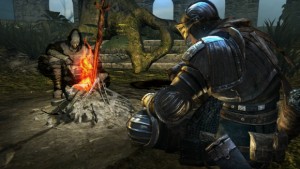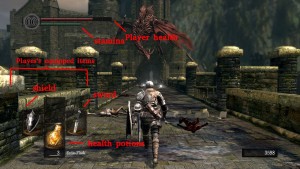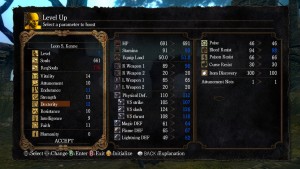One of the hardest modern video games can be defeated with some keen tips and tricks and a little foreknowledge before plunging into the depths of the world of Lordran in “Dark Souls”. The key to becoming an expert to any video game with a steep learning curve is utilizing the mechanics of gameplay and understanding the world in which the player exists. This simple guide will hopefully give any future player a better idea of what to expect and take away the grandeur mystery that’s attributed to this title by many players too afraid to breach its shores.
Some background on the game: “Dark Souls” is a third-person single player fantasy role playing game that takes place in the open world of Lordran, a post-apocalyptic-type world where everything is dead. Some players who are “undead” roam the world, but often die due to the monsters and creatures lurking around every corner. The player can interact with these non-player characters (NPCs) who have managed to survive and in turn it can affect the outcome of the game and perhaps end up helping the player along the way.
The main dynamic of gameplay is killing monsters through various attacks with an assortment of weapons. Killing monsters rewards items called “souls” that the player collects and accumulates throughout the game. To level up, a player spends these souls at checkpoints called “bonfires” in order to increase a skill point into a set of predetermined set of attributes.


For example, it may cost 5000 souls to increase from level 1 to level 2. Once 5000 or more souls are accrued, the player may spend these souls and spend the skill point into Strength or Endurance, and must wait until the next amount of souls is obtained to gain another skill point to spend. This is how the leveling system works. Each level the player increases though, more souls are needed so that by level 20 or 30, the player may need tens of thousands of souls in order to level up one level. This is where it gets challenging. If a player dies, he loses his accumulated unspent souls and has one chance to return to the spot he died at to reclaim his souls since the last bonfire he rested at, the checkpoint where he respawns. If the player doesn’t reach his death spot to reclaim his souls, those souls are lost and cannot be regained. Though the bonfires are spread out somewhat evenly in the beginning, throughout the game they are more scarce and so traversing a particularly tough area can be challenging if a player isn’t careful. Every time a player rests or respawns at a bonfire, all of the monsters in that area also respawn (except bosses and mini-bosses), so walking back to the crime scene of death proves to be a risky move.

Despite the strategies of gameplay that can be mastered, these other topics are important to know for an aspiring dark souls player: combat strategies, items and loot, gear sets and weapons, online interactions and how to use them, and non-player characters and how they can help the player. With these basic concepts mastered after reading my guide, it’s more than possible for a new player to dive into “Dark Souls” well prepared.